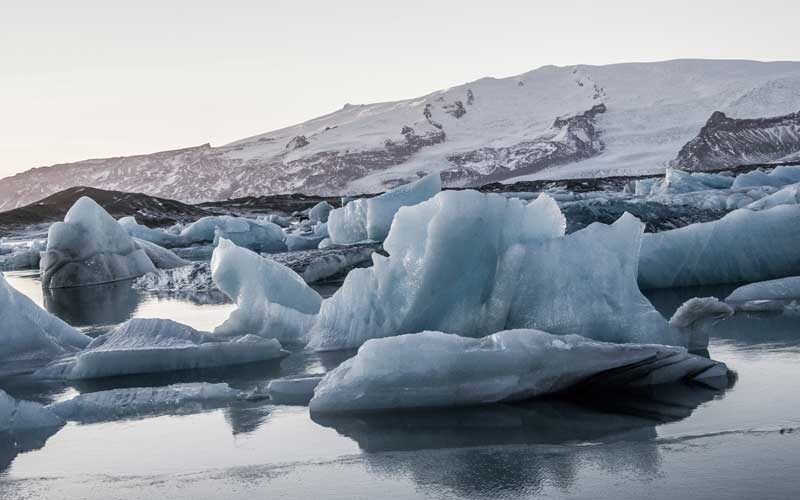How fast are the glaciers melting?
According to a recent study, the Arctic is forecast to be virtually completely free of floating ice by the summer of 2030—a decade earlier than predicted. Scientists assert that even if immediate action were to be taken, it would be too late because they believe that human activity is responsible for about 90% of the melting caused by climate change. The arctic ice has been melting at a rate of 13% per ten years since 1979. And 2020 marked the pinnacle, with 4 million km² of ice melting (Fleck, 2023).
That being said, not all of the ice in the Arctic has thawed. For instance, glaciers in the Hindu Kush area of the Himalayan Mountains are melting so quickly that it is predicted that about 80% of them will disappear if global warming is left unchecked. The billions of people living in Asia would be immediately affected if this occurred, leading to landslides, avalanches, floods, and food shortages. The outcome will be so disastrous that it may even have an impact on distant nations like the United States and maybe the entire human race (Zargar, 2023).
Glaciers release diseases.
In addition to the potential for natural calamities caused by massive glacier melts, viruses may potentially find a way out. Ice samples from China’s Tibetan Plateau have shown viruses that date back more than 15,000 years. Since no records of these viruses exist, it is likely that they are entirely new, potentially fatal viruses that have never before infected humans, or at the very least, that no written records exist of them. Research has shown that the viruses, which were preserved and locked inside the ice core, are unquestionably alive. The samples were taken 22,000 feet above sea level (Bressan, 2021).
The genetic codes for 33 distinct viruses have been discovered in the core of the Tibetan Plateau glacier ice sample. Of them, four belong to a viral family that only infects bacteria and plants. At least 28, though, remain a complete mystery, and it’s not known just yet how deadly they may be. The fact that such viruses may endure in harsh conditions only increases their threat level (Bressan, 2021).
On top of that, more than a thousand distinct virus species have been discovered from samples of snow and ice found in the Tibetan glaciers by a recent study. When the glaciers are fully merged, they may cover up to 10% of the surface of the Earth. They also act as the world’s greatest water reserve. This is worrisome because there’s a good chance that viruses will find their way into streams and rivers when the glaciers melt. Since there are at least a thousand different types of viruses and we don’t know what they do, the consequences might be fatal for a large number of people (Yirka, 2022).
References
(Bressan, D.).,2021. Glacier Ice Reveals Previously Unknown Viruses. [online] Forbes. Available at: https://www.forbes.com/sites/davidbressan/2021/07/21/melting-glaciers-reveal-previously-unknown-viruses/?sh=5f016fb81604 [Accessed 16 Dec. 2023].
(Fleck, A.).,2023. Infographic: Sea Ice Cover in the Arctic is Receding. [online] Statista Infographics. Available at: https://www.statista.com/chart/19104/extend-of-arctic-sea-ice/ [Accessed 16 Dec. 2023].
(Yirka, B.).,2022. Bacteria species found in glacial ice could pose disease risk as glaciers melt from global warming. [online] phys.org. Available at: https://phys.org/news/2022-06-bacteria-species-glacial-ice-pose.html [Accessed 16 Dec. 2023].
(Zargar, A.)2023. Himalayan glaciers are melting faster than ever, and scientists say it’s ‘going to affect us’ all – CBS News. [online] www.cbsnews.com. Available at: https://www.cbsnews.com/news/himalaya-glaciers-melting-faster-study-warns-will-affect-us-all/ [Accessed 16 Dec. 2023].
